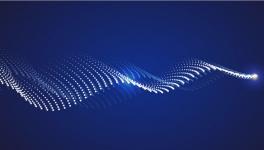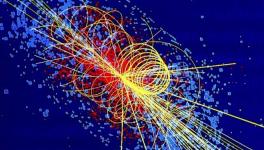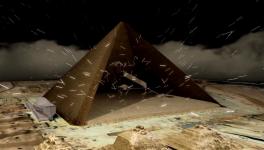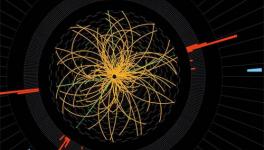'Evidence of New Physics': Muon’s Magnetic Properties Open up Paradigms
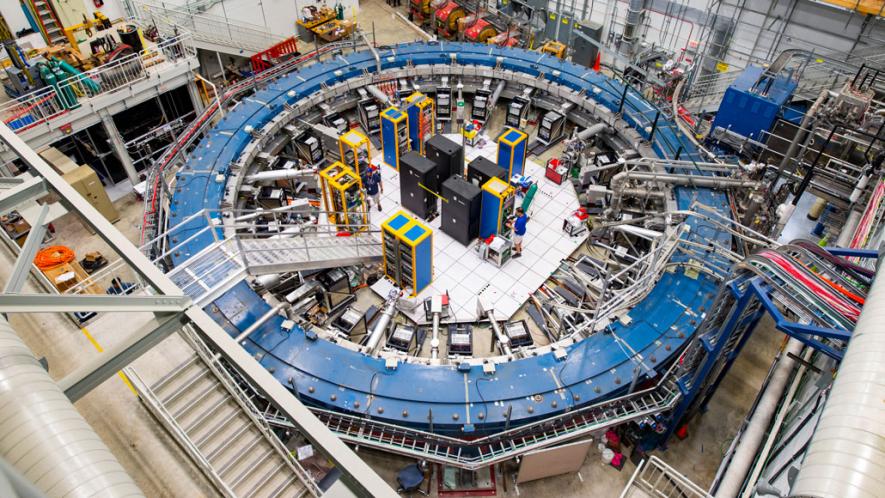
Image Courtesy: Science News
The Standard Model of particle physics has been scientists’ best explanation of sub-atomic particles – fundamental particles. The idea behind the theory is that everything in the universe is made up of few basic building blocks, which are the fundamental particles. These particles interact among themselves in a myriad ways which are governed by four fundamental forces. The four fundamental forces of the universe are the Gravitational force, Electromagnetic force, Strong force and the Weak force. The standard model encapsulates how fundamental particles are related to three of the four fundamental forces (excluding gravity). The standard model has been the gold standard for particle physicists.
The theory was developed in the year 1970 and has since then has successfully explained almost all experimental results and predicted a wide variety of phenomena with remarkable precision.
However, one fundamental particle called the ‘Muon’, seems to be deviating from the model. Latest results from experiments – called the Muon g-2 (pronounced g minus 2) – at the National Accelerator Laboratory (Fermilab), Chicago, has provided some clarity with its results published in the peer-reviewed scientific journal Physical Review Letters (PRL) on April 7.
The Results:
The new results confirm that the magnetic property of the Muon deviates from what can be predicted by using the Standard Model. The first hint that there was something amiss about muons was in 2001, when experiments were conducted at the Brookhaven National Laboratory in New York. Physicists measured the magnetic moment of the particle. Magnetic moment is a property of a particle that makes it behave like a tiny magnetic bar.
The Standard Model estimated that the magnetic moment of a Muon should have been a numerical value close to, but not equal, to two. The Brookhaven experiment found that there existed a small difference in the magnetic moment of muons obtained from the experiment than what the model had estimated The difference is named g-2. The Brookhaven experiment found that its magnetic moment was slightly bigger than what was predicted by the model.
The new results precisely found the value of the magnetic moment of muons and confirmed that it was slightly greater than the predicted value.
What is a Muon?
A Muon is 200-times larger than an electron. Muons occur when cosmic rays hit the Earth's atmosphere. Muons, like electrons, are charged particles and they both spin – like a spinning-top. Any spinning, charged particle behaves like a magnet. And, if you put such a spinning charged particle in an external magnetic field, it starts wobbling a bit. This known as precession - the rotational axis itself shifts around in a circular movement.
The rate at which a Muon precesses in an external magnetic field is determined by the strength of the internal magnet. This is described by a number that physicists call the g-factor. The value of the g-factor can be determined with high precision.
How was the Fermilab Experiment Conducted?
In Fermilab, researchers repeated the Brookhaven experiment. Here, muons were kept running in circles around a super-conducting ring magnet with a diameter of 15 meters. The Fermilab team had started collecting data in 2018.
What were the results? “As the muons circulate in the Muon g-2 magnet, they also interact with a quantum foam of subatomic particles popping in and out of existence. Interactions with these short-lived particles affect the value of the g-factor, causing the muons’ precession to speed up or slow down very slightly. The Standard Model predicts this so-called anomalous magnetic moment extremely precisely. But if the quantum foam contains additional forces or particles not accounted for by the Standard Model, that would tweak the muon g-factor further,” the Fermilab website said.
This is remarkable. An anomaly in the g-factor value hints at the existence of new fundamental particles or new fundamental forces not accounted for by the Standard Model.
Renee Fatemi, a physicist at the University of Kentucky and the simulation manager of the Fermilab experiment, further explained the results, and was quoted saying: “This quantity we measure reflects the interactions of the muon with everything else in the universe. But when the theorists calculate the same quantity, using all of the known forces and particles in the Standard Model, we don’t get the same answer. This is strong evidence that the muon is sensitive to something that is not in our best theory.”
The g-factor values obtained from the new experiments and predicted by the Standard Model are as below:
Theoretical value:
g-factor= 2. 00233183620 (86)
Experimental value:
g-factor= 2. 00233184122 (82).
The results from Fermilab and Brookhaven experiments show a difference with the theoretical value at a significance of 4.2 sigma. This is a little less than 5 sigma, a reading that scientists require to claim the discovery of new particles or forces. However, this is “compelling evidence of new physics”, claimed Fermilab.
Get the latest reports & analysis with people's perspective on Protests, movements & deep analytical videos, discussions of the current affairs in your Telegram app. Subscribe to NewsClick's Telegram channel & get Real-Time updates on stories, as they get published on our website.









